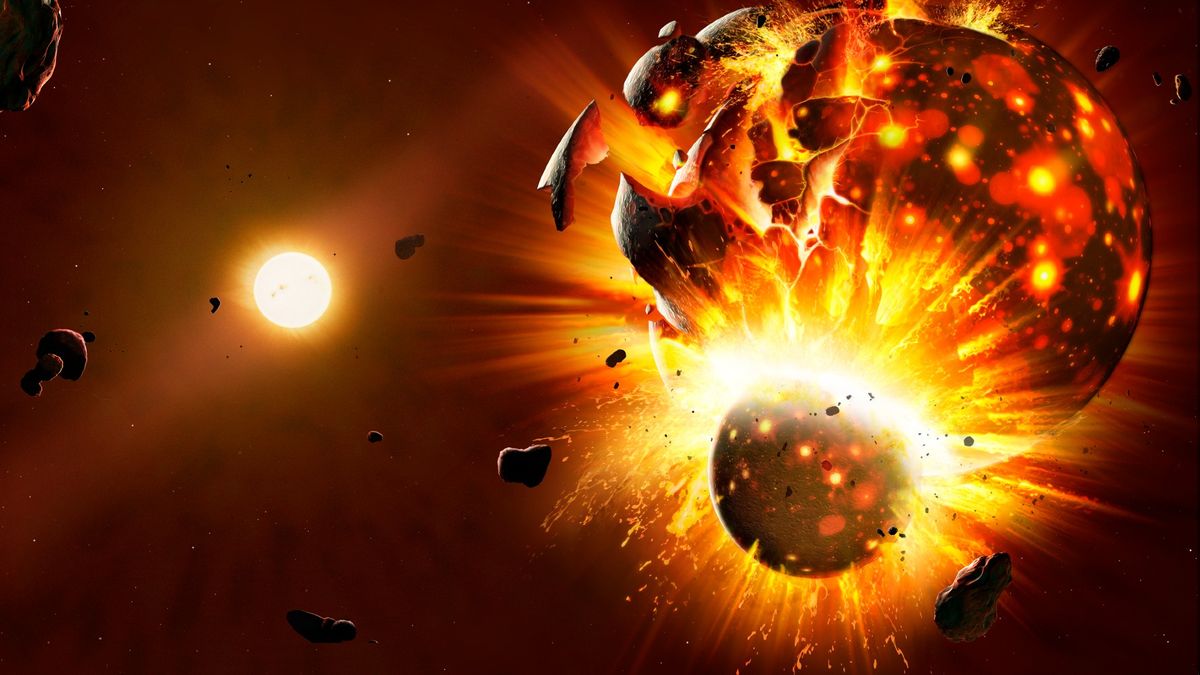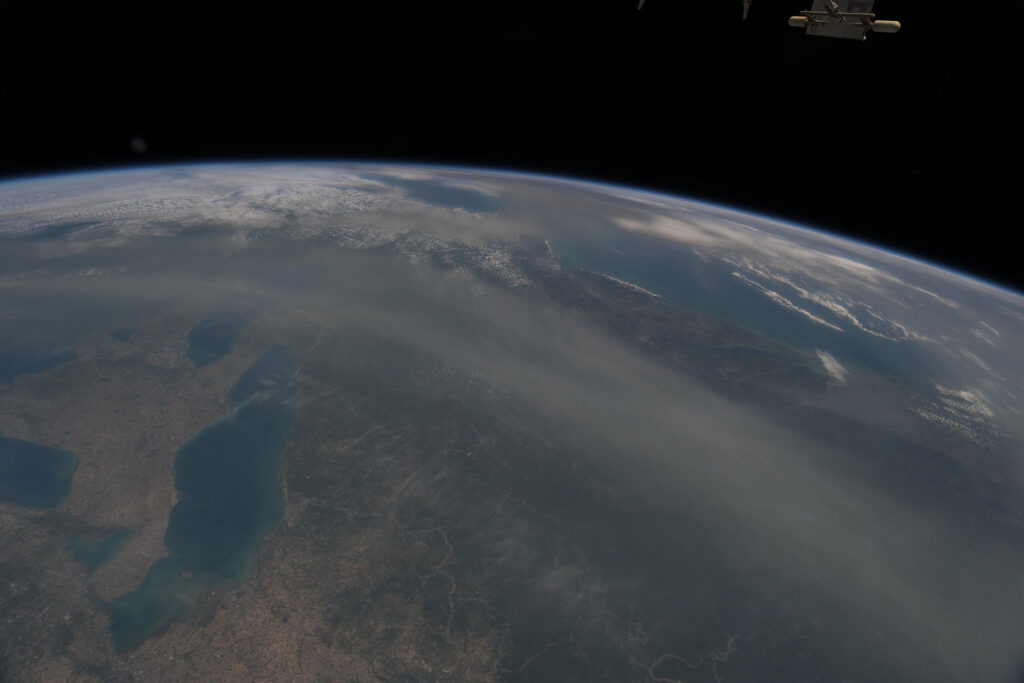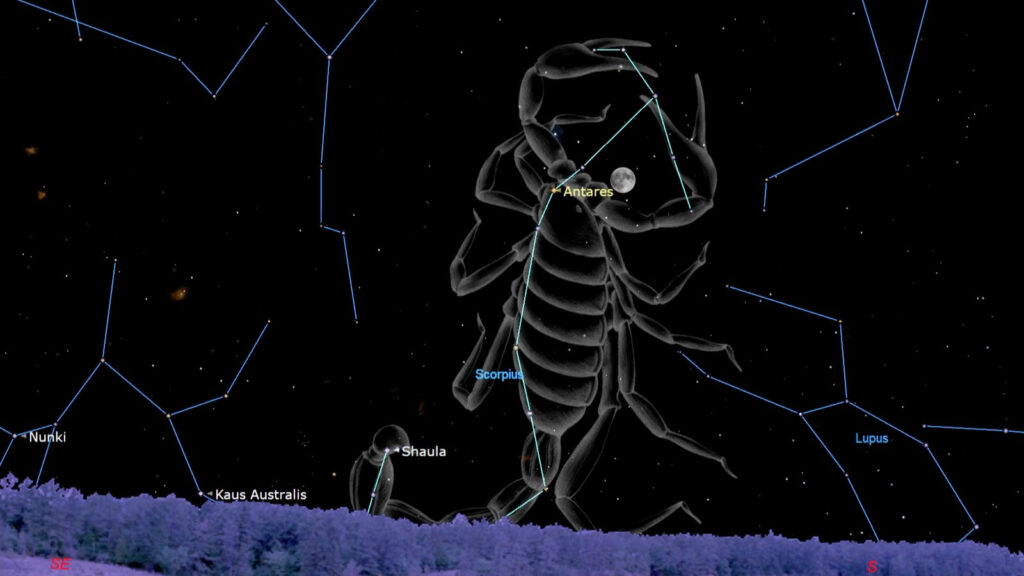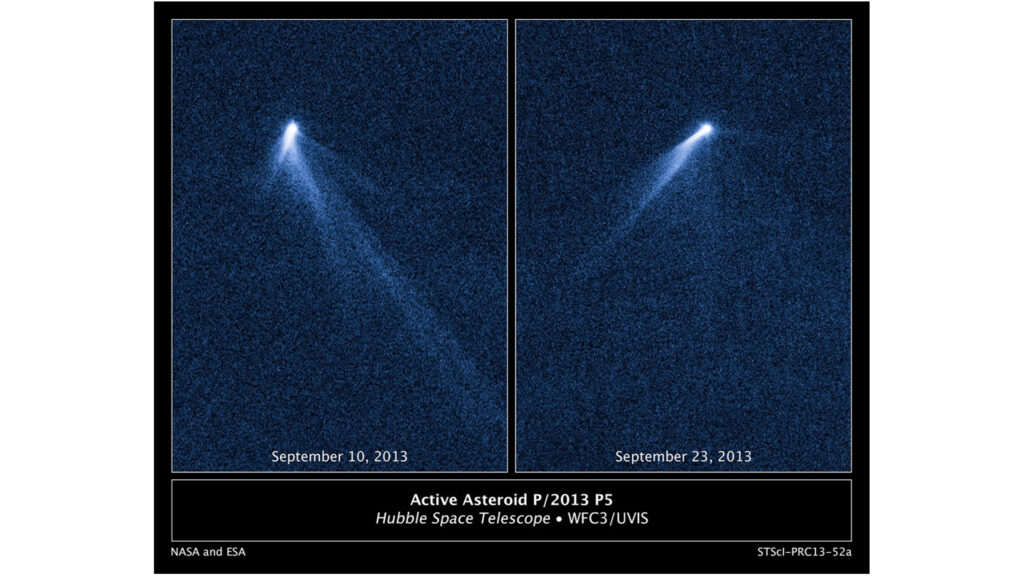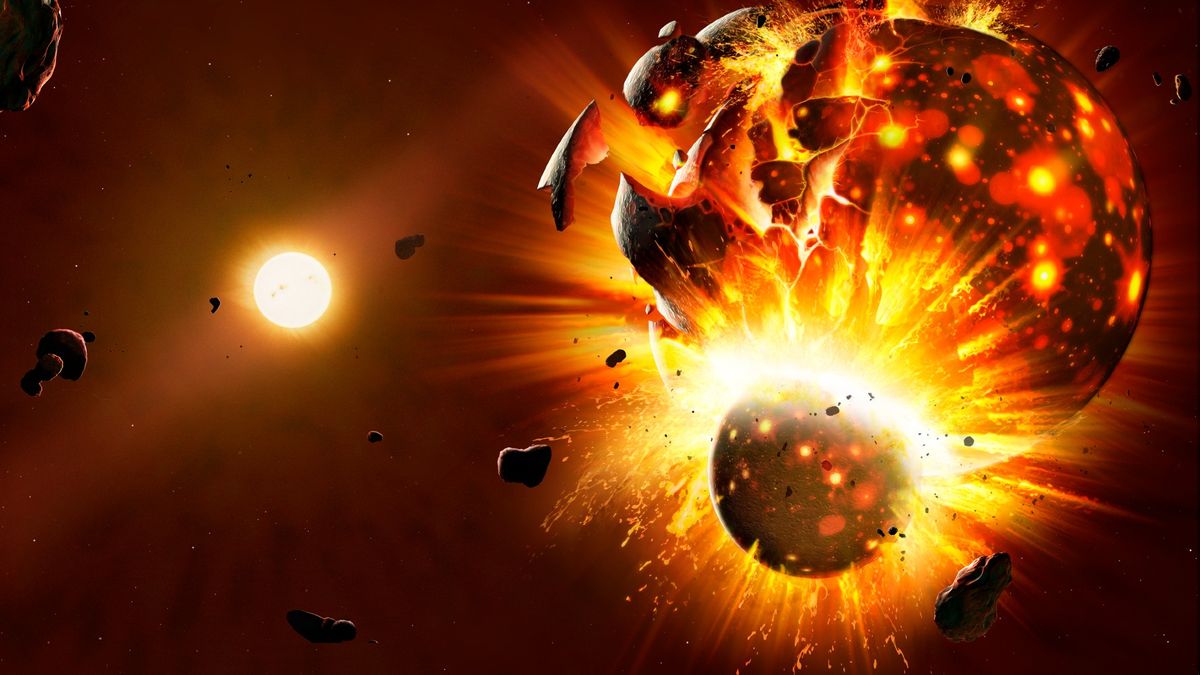
If you want to build a planet, you’re going to have to get your hands dirty. That’s the lesson from a recent paper, which outlines just how vital giant impacts are to the formation of planets.
Astronomers still aren’t exactly sure how planets get their start. Initially, star systems are just clouds of gas and dust swirling around a newborn star. Some of that gas coalesces to form the seeds of planets. Over millions of years, trillions of those seeds merge, becoming ever larger and attracting their neighbors. At a critical stage in the development of the system, thousands — maybe even millions — of planetesimals, each one no bigger than a few hundred kilometers across, orbit the star.
Those planetesimals must collide and merge to finally build the protoplanets, but even after that phase, the violence isn’t over. What happens next is a topic of heated debate among astronomers, as discussed in a recent review article summarizing our current understanding of the role of giant impacts in the formation of planets.
Related: James Webb Space Telescope detects clues about how Earth formed billions of years ago
Planets suffer impacts and collisions all the time, even to the present day. But most are relatively minor; they may carry a lot of energy, but in the end, they leave nothing more than a crater. By contrast, giant impacts, while much rarer, are much more energetic and happen only when two planets of roughly equal mass collide. These enormous impacts can completely reshape a planet, changing its formation trajectory and even affecting its habitability.
For example, many astronomers believe a giant impact formed Earth’s moon, when a Mars-size object struck the proto-Earth. The impact destroyed the interloper and vaporized a good fraction of our planet’s crust, sending it up into orbit, where it eventually coalesced. Without that giant impact, we likely wouldn’t have such a large moon, which has proved very useful for the evolution of life on our planet, as the moon keeps Earth’s axial tilt stable over billions of years.
Giant impacts can be destructive, too. Mercury likely started out as a much larger world, roughly twice its current size. But an impact with an Earth-mass body destroyed its mantle, completely vaporizing it to the point where it could never return. The cores of the two protoplanets then merged, giving Mercury a core that’s much larger than it should be for the planet’s size.
The violence isn’t confined to the inner solar system, either. The outer planet Uranus has a severe tilt, as the planet sits almost completely on its side. Even Uranus’ moons orbit the planet perpendicular to the plane of the solar system. One possible explanation for this scenario is a giant impact, where a body two to three times Earth’s mass struck Uranus, shoving it on its side and sending a cloud of debris into orbit around it, where that debris eventually settled into the planet’s family of moons.
While the simplest models of impacts assume that the impactor gets accreted onto the parent body, the authors also outlined several more complicated impact scenarios. The most common impact event is a “hit-and-run,” in which the impactor strikes the planet with a glancing blow, tearing off some material but surviving the encounter.
RELATED STORIES:
But once two planets have struck once, their orbits are forever altered — and they are more likely to strike again. A series of hit-and-run incidents can allow a planet to significantly increase the mass of its mantle by stripping off the outer layers of the impactor over the course of millions of years.
Ultimately, without a time machine, we will never fully recover the precise history of our solar system’s formation, so we will never be entirely sure what role giant impacts had in the development of our familiar planets. But the more we learn about giant impacts and their importance, the better we can understand the possible outcomes of planetary diversity.
This kind of understanding is tremendously important as we continue to search for other habitable worlds in the galaxy, as the rarity of Earth-like planets might just depend on how violent planetary formation is.
